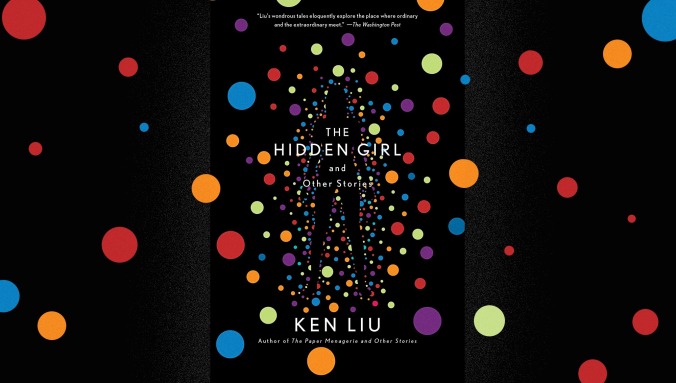
Over the past 20 years, Ken Liu has been a software engineer at Microsoft, a corporate lawyer, the world’s foremost translator of Chinese science fiction into English, a pioneer of the “silkpunk” genre, a Star Wars novelist, and, somehow, on top of all that, one of the most prolific short story writers in science fiction and fantasy. The Hidden Girl And Other Stories is his second collection, arriving on the heels of 2016’s The Paper Menagerie, the title story of which was the first to ever win the fantasy equivalent of an EGOT (the Hugo, Nebula, and World Fantasy Awards). The 17 stories collected here—nearly all concerned with memory, legacy, prejudice, and colonialism—are joined by a new novelette and an excerpt from Liu’s forthcoming novel, The Veiled Throne (the final book in his Dandelion Dynasty trilogy).
There’s a stunning 250-page collection hidden within this 400-page book. It opens with “Ghost Days,” which is structured like the mathematical equation cited in its opening lines. Three hundred years from now, on a colonized exoplanet named Nova Pacifica, a “barely human” child stumbles upon an artifact that once belonged to her earthbound ancestors. As the story flashes back to 1989 Connecticut and 1905 Hong Kong, the truth about the artifact and how it connects parents and children across the gulf of space and time is revealed. “The past, ever recurring, made up the future like layers of a patina,” the child realizes in one of Liu’s frequent story-ending koans.
In “The Reborn,” a novelette inspired by a Richard Anderson illustration, an alien civilization called the Tawnin has colonized Earth. Their occupation is seen as benevolent by most of the human population, but when a group of “freedom fighters” blows up an alien ship in Boston, the anti-terrorism agent tasked with investigating them discovers world-shattering truths. The Tawnin are among the most memorable creations of Liu’s career. “Their brains, like the teeth of sharks, never cease growing. New brain tissue is continuously produced at the core while the outer layers are sloughed off periodically like snakeskin,” the narrator explains. “[M]emories that they wish to leave behind are cast off like dried pupa husks with each cycle of change.” To maintain control over the human population (and erase all evidence of their violent conquest), the Tawnin manually remove human memories, including the narrator’s, who doesn’t remember anything about his life before his last “rebirth.”
The Hidden Girl should have gone through a similar sloughing process before it was published. The title story, a Wuxia-style fantasy about a sisterhood of assassins with the powers of the X-Men’s Nightcrawler, belongs in a different collection altogether. The battle over a disruptive new cryptocurrency in “Byzantine Empathy” seems driven by Liu’s research interests in lieu of narrative ones. The final story, “Cutting”—in which an order of monks removes phrases from their holy book for decades until only two dozen words remain—results in a Paulo Coelho-esque series of affirmations. “Dispatches From The Cradle: The Hermit—Forty-Eight Hours In The Sea Of Massachusetts,” a travelogue set in a future ravaged by climate change, at times resembles a Wikipedia summary more than a work of fiction. (“The prolonged economic depression in much of North America has led to a decline of the region’s once-famous pneumatic tube transportation networks that connected the climate-controlled domed cities,” begins one section.)
Like a lot of genre fiction, most of Liu’s stories are puzzle boxes; you don’t get the full picture until the final page. In the penultimate story, “The Message,” a xenoarchaeologist and his estranged daughter realize the ruins of an alien city were designed to communicate something about a secret buried at the center of its concentric rings. It’s a fascinating premise with a clever solution, but after reading the 15 stories that precede it, it’s clear the secrets hidden within Liu’s riddles are almost always horrific deaths or tragedy. Individually, that makes many of these stories emotionally poignant and powerful, but when read one after another after another, all of the dead children and traumatic flashbacks become exhausting. One starts to lose interest in opening more boxes.
Author photo: Lisa Tang Liu